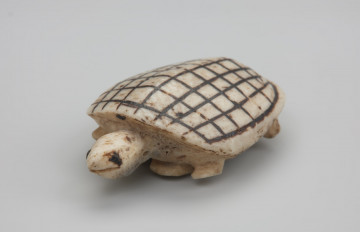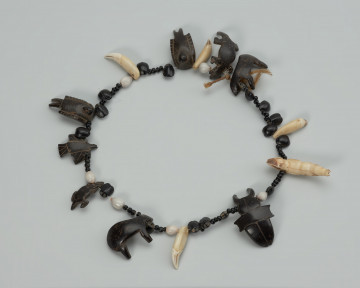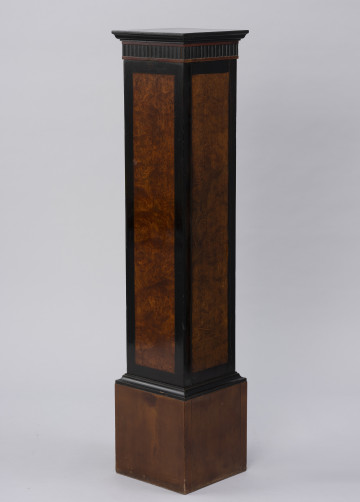
Toy representing turtle
około 1966
National Museum in Szczecin
Part of the collection: Crafts of the Amazon Indians
The figurine on display depicts a beetle, the rhinoceros hornworm (Oryctes nasicornis). According to collector Boris Malkin, it is a scarce object. In the course of his numerous field investigations, he has never seen such a toy. Tukúna men are specialists in woodworking. Their work is distinguished by exceptional precision and attention to detail. Malkin wrote about the craft in this way: I had the opportunity to observe the work of some of the best craftsmen. For their pleasure, and sometimes for sale, they carved in wood figures representing people, caimans, fish, monkeys, lizards, wild cats, turtles. I remember in particular one large sculpture of a monkey, full of extraordinary expressive movement. The Tukúna Indians traditionally inhabit western Brazil and adjacent regions of Colombia. They used to live in large communal huts. Nowadays, they build smaller houses on stilts, without walls, which single families inhabit. They live by farming, fishing and gathering. Hunting used to play a large part in their lives. Nowadays, due to the overpopulation of the game, it is of little importance. They grow bitter cassava, cotton, bananas, pumpkins and pineapples. Their main occupation is fishing. They use lines and hooks for fishing and are also known to use the poisonous timbó plant. Although their daily lives and rituals have changed significantly, the shaman still plays an important role in Tukúna life. The Indians believe that shamans acquire their supernatural power through contact with the spirits of certain trees. Thanks to this power, they can throw invisible thorns, which penetrate the victim's body, causing illness and even death. Their main task is to protect their community from such thorns, hence, they are equipped with the gift of detecting who is sending disease and know how to cure it. The Tukúna believe that the main perpetrators of diseases are evil spirits or other, malicious shamans. They identify emerging epidemics with the sun - the origin of all pests, from where the winds spread them.
Katarzyna Findlik-Gawron
Author / creator
Dimensions
cały obiekt: height: 2 cm, width: 5,85 cm
Object type
toy
Creation time / dating
Creation / finding place
Identification number
Location / status

około 1966
National Museum in Szczecin

około 1966
National Museum in Szczecin

1901 — 1945
National Museum in Szczecin
DISCOVER this TOPIC
Museum of King Jan III's Palace at Wilanów
DISCOVER this PATH
Educational path